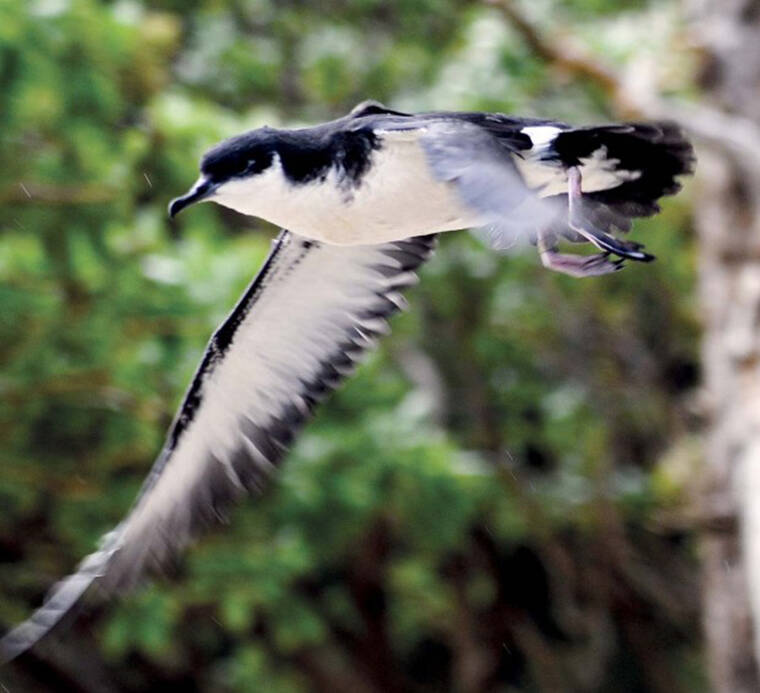LIHU‘E — Seabird fallout season, when fledglings risk potentially-fatal disorientation caused by artificial lights, began Sept. 15, and will run through Dec. 15.
The novel coronavirus likely affected overall seabird fallout last year, according to the Hawai‘i Department of Land and Natural Resources’ Division of Forestry and Wildlife.
“The pandemic caused reduced occupancy of the hotels, and also no use of the cruise ships, so we would assume lower fallout from those sources,” a DOFAW spokesperson said in a statement.
The species most affected by fallout is the federally-threatened Newell’s shearwater (‘a‘o). Other impacted birds include the wedge-tailed shearwater (‘ua‘u kani), the endangered Hawaiian petrel (‘ua‘u) and the band-rumped storm petrel (‘ake‘ake), all of which are found on Kaua‘i.
The birds navigate out to sea using moonlight. Strong outdoor lighting can cause confusion, leading to harmful collisions or falls due to exhaustion.
“Once on the ground, they become extremely vulnerable to predators or may be hit by vehicles,” DOFAW warns on its website.
DOFAW encourages residents to turn off unnecessary lights, install low-intensity bulbs, close window drapes and use seabird-friendly lighting that points down and away from the beach to mitigate fallout.
The forestry and wildlife division is also part of the multi-agency Kaua‘i Seabird Habitat Conservation Plan to offset fallout incurred by businesses and entities unable to completely avoid contribution to fallout.
The 30-year plan was finalized in 2020. Participants, which include the County of Kaua‘i and Kaua‘i Island Utility Cooperative, receive permits for a calculated number of seabirds affected by fallout. In return, permit-holders pay for a suite of on-site and off-site conservation measures, in proportion to their permitted lethal take. These include a seabird “social attraction” project, protective fencing and predator control, in addition to light mitigation.
Kaua‘i County allocated $425,000 for a line item related to its habitat conservation plan permit in fiscal year 2021, and planned to do so again in fiscal year 2022.
The forestry and wildlife division does not anticipate a significant reduction in fallout as a result of the habitat conservation plan, “since the participants have been minimizing for years.”
“Instead the HCP benefit to the species is that we are now getting mitigation for the bird losses, where before those losses were not offset,” DOFAW’s statement reads.


